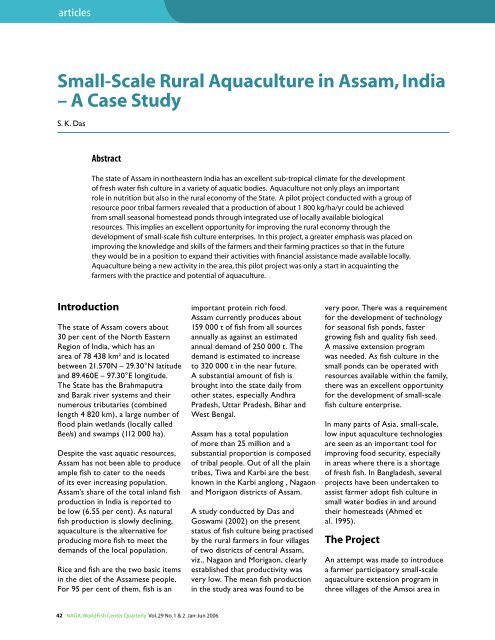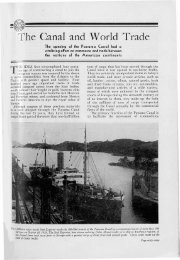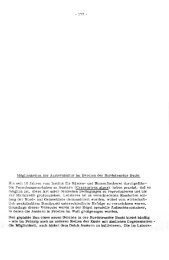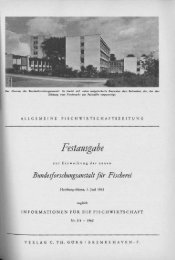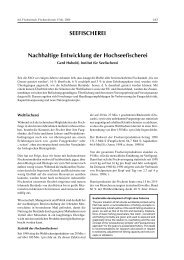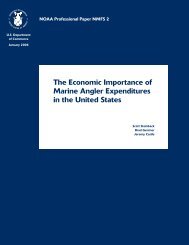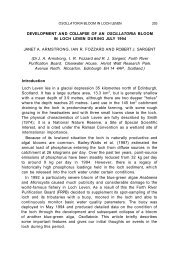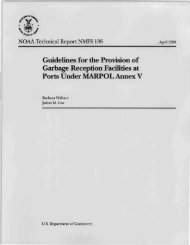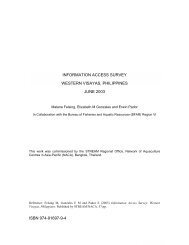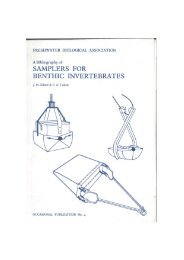Small-Scale Rural Aquaculture in Assam, India ? A Case Study
Small-Scale Rural Aquaculture in Assam, India ? A Case Study
Small-Scale Rural Aquaculture in Assam, India ? A Case Study
Create successful ePaper yourself
Turn your PDF publications into a flip-book with our unique Google optimized e-Paper software.
articles<br />
<strong>Small</strong>-<strong>Scale</strong> <strong>Rural</strong> <strong>Aquaculture</strong> <strong>in</strong> <strong>Assam</strong>, <strong>India</strong><br />
– A <strong>Case</strong> <strong>Study</strong><br />
S. K. Das<br />
Abstract<br />
Introduction<br />
The state of <strong>Assam</strong> <strong>in</strong> northeastern <strong>India</strong> has an excellent sub-tropical climate for the development<br />
of fresh water fish culture <strong>in</strong> a variety of aquatic bodies. <strong>Aquaculture</strong> not only plays an important<br />
role <strong>in</strong> nutrition but also <strong>in</strong> the rural economy of the State. A pilot project conducted with a group of<br />
resource poor tribal farmers revealed that a production of about 1 800 kg/ha/yr could be achieved<br />
from small seasonal homestead ponds through <strong>in</strong>tegrated use of locally available biological<br />
resources. This implies an excellent opportunity for improv<strong>in</strong>g the rural economy through the<br />
development of small-scale fish culture enterprises. In this project, a greater emphasis was placed on<br />
improv<strong>in</strong>g the knowledge and skills of the farmers and their farm<strong>in</strong>g practices so that <strong>in</strong> the future<br />
they would be <strong>in</strong> a position to expand their activities with f<strong>in</strong>ancial assistance made available locally.<br />
<strong>Aquaculture</strong> be<strong>in</strong>g a new activity <strong>in</strong> the area, this pilot project was only a start <strong>in</strong> acqua<strong>in</strong>t<strong>in</strong>g the<br />
farmers with the practice and potential of aquaculture.<br />
The state of <strong>Assam</strong> covers about<br />
30 per cent of the North Eastern<br />
Region of <strong>India</strong>, which has an<br />
area of 78 438 km 2 and is located<br />
between 21.570N – 29.30°N latitude<br />
and 89.460E – 97.30°E longitude.<br />
The State has the Brahmaputra<br />
and Barak river systems and their<br />
numerous tributaries (comb<strong>in</strong>ed<br />
length 4 820 km), a large number of<br />
flood pla<strong>in</strong> wetlands (locally called<br />
Beels) and swamps (112 000 ha).<br />
Despite the vast aquatic resources,<br />
<strong>Assam</strong> has not been able to produce<br />
ample fish to cater to the needs<br />
of its ever <strong>in</strong>creas<strong>in</strong>g population.<br />
<strong>Assam</strong>’s share of the total <strong>in</strong>land fish<br />
production <strong>in</strong> <strong>India</strong> is reported to<br />
be low (6.55 per cent). As natural<br />
fish production is slowly decl<strong>in</strong><strong>in</strong>g,<br />
aquaculture is the alternative for<br />
produc<strong>in</strong>g more fish to meet the<br />
demands of the local population.<br />
Rice and fish are the two basic items<br />
<strong>in</strong> the diet of the <strong>Assam</strong>ese people.<br />
For 95 per cent of them, fish is an<br />
42 NAGA, WorldFish Center Quarterly Vol. 29 No. 1 & 2 Jan-Jun 2006<br />
important prote<strong>in</strong> rich food.<br />
<strong>Assam</strong> currently produces about<br />
159 000 t of fish from all sources<br />
annually as aga<strong>in</strong>st an estimated<br />
annual demand of 250 000 t. The<br />
demand is estimated to <strong>in</strong>crease<br />
to 320 000 t <strong>in</strong> the near future.<br />
A substantial amount of fish is<br />
brought <strong>in</strong>to the state daily from<br />
other states, especially Andhra<br />
Pradesh, Uttar Pradesh, Bihar and<br />
West Bengal.<br />
<strong>Assam</strong> has a total population<br />
of more than 25 million and a<br />
substantial proportion is composed<br />
of tribal people. Out of all the pla<strong>in</strong><br />
tribes, Tiwa and Karbi are the best<br />
known <strong>in</strong> the Karbi anglong , Nagaon<br />
and Morigaon districts of <strong>Assam</strong>.<br />
A study conducted by Das and<br />
Goswami (2002) on the present<br />
status of fish culture be<strong>in</strong>g practised<br />
by the rural farmers <strong>in</strong> four villages<br />
of two districts of central <strong>Assam</strong>,<br />
viz., Nagaon and Morigaon, clearly<br />
established that productivity was<br />
very low. The mean fish production<br />
<strong>in</strong> the study area was found to be<br />
very poor. There was a requirement<br />
for the development of technology<br />
for seasonal fish ponds, faster<br />
grow<strong>in</strong>g fish and quality fish seed.<br />
A massive extension program<br />
was needed. As fish culture <strong>in</strong> the<br />
small ponds can be operated with<br />
resources available with<strong>in</strong> the family,<br />
there was an excellent opportunity<br />
for the development of small-scale<br />
fish culture enterprise.<br />
In many parts of Asia, small-scale,<br />
low <strong>in</strong>put aquaculture technologies<br />
are seen as an important tool for<br />
improv<strong>in</strong>g food security, especially<br />
<strong>in</strong> areas where there is a shortage<br />
of fresh fish. In Bangladesh, several<br />
projects have been undertaken to<br />
assist farmer adopt fish culture <strong>in</strong><br />
small water bodies <strong>in</strong> and around<br />
their homesteads (Ahmed et<br />
al. 1995).<br />
The Project<br />
An attempt was made to <strong>in</strong>troduce<br />
a farmer participatory small-scale<br />
aquaculture extension program <strong>in</strong><br />
three villages of the Amsoi area <strong>in</strong>
the Nagaon district of <strong>Assam</strong> under<br />
an <strong>in</strong>novative scheme of the <strong>Assam</strong><br />
<strong>Rural</strong> Infrastructure and Agriculture<br />
Service Project (ARIASP, World<br />
Bank) for three years start<strong>in</strong>g from<br />
1998. The primary objectives of<br />
this pilot program were to develop<br />
appropriate technologies suitable<br />
for the target community and to<br />
create a farmer-based extension<br />
system. A total of 29 households<br />
that possessed small to medium<br />
sized ponds (a total of 31 ponds)<br />
were selected as the beneficiaries<br />
of the project for undertak<strong>in</strong>g a<br />
farmer participatory extension<br />
program. Most of the ponds were<br />
seasonal <strong>in</strong> nature (Fig.1). All except<br />
four of the 29 households lived<br />
below the poverty l<strong>in</strong>e. Two were<br />
landless and 11 owned cultivable<br />
land less than one ha. The maximum<br />
cultivable area for any household<br />
was 5-6 ha. Those who had little or<br />
no cultivable area usually worked as<br />
daily wage labour. The average rice<br />
production was about 2 t/ha. <strong>Small</strong><br />
field studies were also undertaken<br />
on appropriate stock<strong>in</strong>g density, use<br />
of wood ash as partial replacement<br />
of lime, production of Magur seed<br />
(Das 2002) and carp seed us<strong>in</strong>g<br />
low-cost hatcheries (Das 2003).<br />
The farmers participat<strong>in</strong>g <strong>in</strong> this<br />
project cultured fish <strong>in</strong> their family<br />
ponds for the first time and actively<br />
cooperated <strong>in</strong> all the small field trials<br />
that were undertaken to develop an<br />
appropriate method for the specific<br />
area and people. In a similar type of<br />
aquaculture extension work, Das et<br />
al. (1998b) also emphasised a need<br />
for more farmer-run field trials.<br />
These resource-poor farmers<br />
usually dug out a portion of their<br />
land to build the foundations of<br />
their thatched houses. The project<br />
utilized these depressions, with<br />
little renovation, as fish ponds for<br />
the project activities. The farmers<br />
belonged to a disadvantaged tribal<br />
group known as the Tiwa and Karbi<br />
whose primary occupation was rice<br />
Table 1. Benefits and constra<strong>in</strong>ts<br />
Benefits Constra<strong>in</strong>ts<br />
cultivation. For all of them, the most<br />
preferred source of animal prote<strong>in</strong><br />
was fish, but they had been able to<br />
harvest only a meagre amount of<br />
fish from the natural water bodies.<br />
Production of cultured fish from<br />
the exist<strong>in</strong>g water bodies <strong>in</strong>cluded<br />
articles<br />
Increase <strong>in</strong> fish availability Lack of knowledge, skills and experience for fish farm<strong>in</strong>g<br />
Food security Lack of quality fish seeds for stock<strong>in</strong>g <strong>in</strong> ponds<br />
Income generation Lack of capital<br />
Employment generation. Lack of support from Government agencies<br />
Figure 1. Type of ponds owned by the participat<strong>in</strong>g farmers.<br />
Figure 2. Animals owned by participat<strong>in</strong>g farmers.<br />
<strong>in</strong> the project was negligible as the<br />
water bodies were not utilized<br />
for scientific fish farm<strong>in</strong>g,<br />
<strong>in</strong>dicat<strong>in</strong>g low consumption of fish.<br />
The price of fresh fish <strong>in</strong> the local<br />
market, rang<strong>in</strong>g from Rs.100 to<br />
Rs.250/kg (US$1 = Rs.46.00),<br />
was unaffordable for these<br />
NAGA, WorldFish Center Quarterly Vol. 29 No. 1 & 2 Jan-Jun 2006 43
articles<br />
Tra<strong>in</strong><strong>in</strong>g, extension<br />
and research facilities<br />
created<br />
Figure 4. Bioresource flows <strong>in</strong> a small-scale aquaculture system <strong>in</strong> the project area<br />
of Amsoi, <strong>Assam</strong> , <strong>India</strong>.<br />
Table 2. Relationships between stock<strong>in</strong>g density and fish production.<br />
Stock<strong>in</strong>g density/m 2<br />
Base-l<strong>in</strong>e survey conducted and identified objectives, constra<strong>in</strong>ts,<br />
resources and available support systems <strong>in</strong> project areas.<br />
Identified need-based topics for tra<strong>in</strong><strong>in</strong>g, extension and farmer<br />
participatory research<br />
1998-99 Mean fish<br />
production (kg/ha)<br />
Capacity build<strong>in</strong>g of<br />
extensionists-tra<strong>in</strong>ers and<br />
farmers. Organisation of<br />
farmers committee<br />
Stock<strong>in</strong>g density/m 2<br />
44 NAGA, WorldFish Center Quarterly Vol. 29 No. 1 & 2 Jan-Jun 2006<br />
1999-2000 Mean fish<br />
production (kg/ha)<br />
3.0-4.0 1 129.84 (131.92) 3.0-4.0 1 369.40 (458.54)<br />
1.0-2.99 1 005.96 (373.00) 1.0-2.99 1 091.14 (364.21)<br />
0.35-0.9 688.85 (161.57) 0.5-0.9 933.55 (381.14)<br />
- - 6.97 869.56<br />
Note: Figures <strong>in</strong> parentheses are the Standard deviation.<br />
WELL TRAINED<br />
FISH FARMERS<br />
Figure 3. Framework for the small-scale aquaculture extension project.<br />
Tra<strong>in</strong><strong>in</strong>g and extension<br />
method and material<br />
preparation<br />
farmers. Given the very low<br />
purchas<strong>in</strong>g power of these farmers,<br />
consumption of fresh fish <strong>in</strong> the<br />
area was low.<br />
Initially, a base-l<strong>in</strong>e survey was<br />
conducted to assess the socioeconomic<br />
condition, needs and<br />
resources of the participat<strong>in</strong>g<br />
farmers (Fig. 2). It was observed that<br />
the farmers lacked the knowledge,<br />
skills and experience for fish farm<strong>in</strong>g.<br />
Several tra<strong>in</strong><strong>in</strong>g programs were<br />
conducted to impart skills required<br />
for fish culture, live-stock farm<strong>in</strong>g,<br />
<strong>in</strong>tegrated farm<strong>in</strong>g, fish breed<strong>in</strong>g<br />
and hatchery management, fish<br />
seed nurs<strong>in</strong>g, fisheries extension<br />
motivation and organization and<br />
micro credit. The participat<strong>in</strong>g<br />
farmers were tra<strong>in</strong>ed to culture fish<br />
<strong>in</strong> their ponds us<strong>in</strong>g locally available<br />
resources. Farmers <strong>in</strong> the project<br />
areas identified the benefits of<br />
and constra<strong>in</strong>ts on productive fish<br />
farm<strong>in</strong>g (Table 1).<br />
Extension<br />
An extension strategy was developed<br />
to help the farmers help themselves.<br />
A farmer’s committee was formed<br />
with a unanimously selected<br />
President, Secretary and an advisor<br />
(Fig. 3). A few representatives from<br />
each village were also selected,<br />
based on their literacy and capability<br />
to act as village extension agents.<br />
The village extension agents were<br />
given specialized tra<strong>in</strong><strong>in</strong>g at several<br />
locations, <strong>in</strong>clud<strong>in</strong>g the project site,<br />
and were able to tra<strong>in</strong> other farmers<br />
Stock<strong>in</strong>g density/m 2<br />
2000-2001 Mean fish<br />
production (kg/ha)<br />
3.0 1 144.13 (371.06)
upon their return to their villages.<br />
The participat<strong>in</strong>g farmers kept<br />
records of <strong>in</strong>puts used and output<br />
obta<strong>in</strong>ed. The project provided<br />
field implements and bicycles to the<br />
extension agents to carry out their<br />
field activities more efficiently.<br />
Average literacy was poor among<br />
the 29 households. A few extension<br />
materials with sketches, especially<br />
a booklet and a poster, were prepared<br />
<strong>in</strong> the local language and distributed<br />
free to all farmers as tra<strong>in</strong><strong>in</strong>g material.<br />
In the absence of a local f<strong>in</strong>ancial<br />
support system, the project<br />
encouraged and guided participat<strong>in</strong>g<br />
farmers, especially women, to form<br />
self help groups (SHGs) for micro<br />
credit. The lone women fishery<br />
extension agent was tra<strong>in</strong>ed <strong>in</strong> micro<br />
credit with<strong>in</strong> and outside the project<br />
to motivate other women <strong>in</strong> the<br />
villages to form credit groups. She<br />
played an important role <strong>in</strong> organis<strong>in</strong>g<br />
the SHGs. This was organised to<br />
<strong>in</strong>itiate a f<strong>in</strong>ancial support system to<br />
provide loans for farm<strong>in</strong>g activities.<br />
The SHGs functioned well with only<br />
the farmers’ contributions.<br />
Technology and<br />
Production<br />
At the start of the project,<br />
discussions were held with the<br />
participat<strong>in</strong>g farmers about species<br />
selection. They preferred the fast<br />
grow<strong>in</strong>g species of carp and Magur<br />
fish for family consumption and<br />
because of their higher market<br />
value. As seed were not easily<br />
available, the project had to start<br />
a small-scale seed production unit<br />
<strong>in</strong> the second year of operation.<br />
The farmers were advised to feed<br />
the fish daily, fertilize the ponds<br />
periodically and harvest fish at a<br />
size of about 250 gm each. Farmers<br />
were motivated to culture Rohu,<br />
Mrigal, Catla, Silver carp, Grass<br />
carp, Java Puthi and Common<br />
carp <strong>in</strong> a polyculture system. On-<br />
farm resources such as cow dung,<br />
chicken manure, pig manure, rice<br />
bran, kitchen wastes, termites, duck<br />
weeds and wood ash were used as<br />
pond <strong>in</strong>puts. Most of the farmers<br />
were satisfied with the production<br />
obta<strong>in</strong>ed each year, as it was the first<br />
time they had been taught scientific<br />
fish farm<strong>in</strong>g <strong>in</strong> small ponds. In the<br />
first year, carp f<strong>in</strong>gerl<strong>in</strong>gs were<br />
distributed to all the 29 families<br />
with an agreement that they would<br />
pay back the cost of seed after<br />
three months of the grow<strong>in</strong>g period<br />
when they were conv<strong>in</strong>ced about<br />
the success of the technology. All<br />
the farmers paid back the cost of<br />
seed with<strong>in</strong> a period of 3-4 months.<br />
All the seven species were made<br />
available to them dur<strong>in</strong>g the project<br />
period. The farmers were tra<strong>in</strong>ed to<br />
produce seed of all the seven species<br />
us<strong>in</strong>g the hatcheries developed for<br />
them <strong>in</strong> the village. There were<br />
many fish seed vendors who went<br />
round the villages on bicycles. The<br />
farmers were advised to ma<strong>in</strong>ta<strong>in</strong> the<br />
recommended stock<strong>in</strong>g density, even<br />
if they were unable to ma<strong>in</strong>ta<strong>in</strong> the<br />
seven species ratio. No <strong>in</strong>puts were<br />
given free of cost. However, some<br />
field implements and other essential<br />
items were provided by the project,<br />
either to the community or for field<br />
trial purposes. At the end of the first<br />
year, a farmer’s day was organized<br />
to evaluate the progress made <strong>in</strong><br />
terms of pond fish production. The<br />
successful implementation of the<br />
project motivated some farmers <strong>in</strong><br />
articles<br />
the area to expand their exist<strong>in</strong>g fish<br />
ponds or to dig new ones.<br />
Results<br />
Table 3. Relationships between pond size and fish production.<br />
Pond size<br />
(m 2 )<br />
1998-1999 Mean fish<br />
production (kg/ha)<br />
The results of the project were<br />
encourag<strong>in</strong>g. A summary of the fish<br />
culture trials conducted over the<br />
three years is given <strong>in</strong> Tables 2, 3 and<br />
4. The results <strong>in</strong>dicated that <strong>in</strong> small<br />
seasonal village ponds, a production<br />
of more than 1 800 kg/ha/year can<br />
be achieved if scientific methods are<br />
followed. The study further <strong>in</strong>dicated<br />
that a stock<strong>in</strong>g density of three fish<br />
(juveniles) per square meter <strong>in</strong> a<br />
small seasonal pond may yield good<br />
fish production (Table 2). It was also<br />
observed that farmers could not<br />
obta<strong>in</strong> better fish production from<br />
large sized ponds (Table 3) compared<br />
to small sized ponds. This may be<br />
due to the lack of resources for<br />
the required <strong>in</strong>puts and <strong>in</strong>adequate<br />
management skills. It was noted<br />
that production from the pond could<br />
be <strong>in</strong>creased if the fish grew to a<br />
bigger size before harvest. Most<br />
farmers made partial harvests of fish<br />
for their family’s consumption after<br />
the fish atta<strong>in</strong>ed about 100 gm <strong>in</strong><br />
weight. Generally, the farmers made<br />
the f<strong>in</strong>al or bulk harvest when the<br />
water level of the pond went down<br />
to a m<strong>in</strong>imum as most ponds were<br />
seasonal <strong>in</strong> nature. The surplus fish<br />
was either sold at the local market<br />
or distributed <strong>in</strong> the village on any<br />
auspicious occasion/ceremony. For<br />
fish farm<strong>in</strong>g activities farmers spent<br />
1999-2000 Mean fish<br />
production (kg/ha)<br />
2000-2001 Mean fish<br />
production (kg/ha)<br />
500 724.76 (128.35) 1 186.42 (420.83) 848.80 (143.64)<br />
Note: Figures <strong>in</strong> parentheses are the Standard deviation.<br />
NAGA, WorldFish Center Quarterly Vol. 29 No. 1 & 2 Jan-Jun 2006 45
articles<br />
Table 4. Results of fish culture trials conducted between 1998-2001.<br />
Parameters 1998-1999 1999-2000 2000-2001<br />
M<strong>in</strong>imum culture period (day) 140 120 117<br />
Maximum culture period (day) 285 302 287<br />
Average culture period (day) 182.0 (28.19) 209.24 (48.13) 201.31 (38.90)<br />
Total actual production (kg) 840 1104 1022<br />
Total pond area (m 2 ) 8 936.30 9 135.85 9 762.35<br />
M<strong>in</strong>imum production (kg)<br />
M<strong>in</strong>imum production (kg)<br />
Average Fish production (kg)<br />
Fish production (kg/ha/yr)<br />
money for the fish seed (Rs.100-150<br />
per 1 000), rice bran, oil cake and<br />
<strong>in</strong>organic fertilizers. A participat<strong>in</strong>g<br />
farmer who owned a rice mill<br />
provided rice bran at a subsidized<br />
rate of Rs.1.50/kg. For a 100 m 2<br />
seasonal pond, an <strong>in</strong>dividual farmer<br />
spent Rs.200-400 on <strong>in</strong>puts.<br />
Fish seed production<br />
574.60<br />
(<strong>in</strong> 180 days)<br />
2 345.67<br />
(<strong>in</strong> 285 days)<br />
939.98 kg/ha/182<br />
days<br />
1 885.12 kg/ha/<br />
year<br />
Note: Figures <strong>in</strong> parentheses are the Standard deviation.<br />
Seed is the basic <strong>in</strong>put for fish culture.<br />
In the first year, the project arranged<br />
to deliver the stock<strong>in</strong>g materials<br />
(primarily fish seed) for fish culture at<br />
the project site from outside sources.<br />
In the second year, fish spawn were<br />
Farmers produce seed of Clarias batrachus us<strong>in</strong>g<br />
a small-scale rural model hatch<strong>in</strong>g trough.<br />
46 NAGA, WorldFish Center Quarterly Vol. 29 No. 1 & 2 Jan-Jun 2006<br />
328.95<br />
(<strong>in</strong> 160 days)<br />
2 716.04<br />
(<strong>in</strong> 297 days)<br />
1 208.42 kg/<br />
ha/209 days<br />
2 110.41 kg/ha/<br />
year<br />
712.95<br />
(<strong>in</strong> 250 days)<br />
2 380.95<br />
(<strong>in</strong> 238 days)<br />
1 046.87 kg/ha/<br />
201 days<br />
1 901.04 kg/ha/<br />
year<br />
bought from a Government carp<br />
hatchery and the farmers were<br />
tra<strong>in</strong>ed to rear them to f<strong>in</strong>gerl<strong>in</strong>gs for<br />
distribution. The farmers made some<br />
profit on this <strong>in</strong> the very first trial.<br />
An attempt was also made to<br />
produce seed of Clarias batrachus<br />
as the adult fish fetched a very<br />
high price <strong>in</strong> the market, rang<strong>in</strong>g<br />
from Rs.150 to Rs.250/kg. The<br />
establishment of a farmer-run smallscale<br />
hatchery was a vital component<br />
of the basic extension strategy (Das<br />
et al.1998a). Therefore, a low-cost,<br />
portable and small-scale Magur fish<br />
hatch<strong>in</strong>g trough was designed and<br />
A Tiwa woman at her pond.<br />
successfully operated by the farmers<br />
(Das 2002). A small quantity of Magur<br />
seed was produced and sold to the<br />
farmers at a marg<strong>in</strong>al profit. This was<br />
the first successful farmer operated,<br />
village level, small-scale Magur seed<br />
production unit <strong>in</strong> <strong>Assam</strong>. A low-cost<br />
carp hatchery was also designed and<br />
commissioned to produce fish seed<br />
locally (Das 2003). In the third year,<br />
a significant number of fish seeds<br />
were produced locally to cater to the<br />
needs of the fish farmers. The land<br />
required to construct the hatchery<br />
was provided by one of<br />
the beneficiaries.<br />
Integrated farm<strong>in</strong>g<br />
Research carried out by ICLARM<br />
(Lightfoot and Pull<strong>in</strong> 1994) had<br />
<strong>in</strong>dicated that there is a potential<br />
to <strong>in</strong>crease the number of recycl<strong>in</strong>g<br />
flows on a farm through aquaculture<br />
<strong>in</strong>tegration. Although the project’s<br />
basic aim was to <strong>in</strong>troduce scientific<br />
fish culture <strong>in</strong> this tribal area for<br />
<strong>in</strong>creas<strong>in</strong>g fresh fish production, it<br />
was soon realized that cultur<strong>in</strong>g fish<br />
<strong>in</strong> a small homestead and seasonal<br />
pond could not provide an adequate<br />
livelihood for a family. The farmers <strong>in</strong><br />
the area depend on ra<strong>in</strong>fall for paddy<br />
cultivation. Therefore, an effort was<br />
made to help the farmers to cultivate<br />
paddy dur<strong>in</strong>g the w<strong>in</strong>ter months. An<br />
STW (shallow tube well) was <strong>in</strong>stalled
at the project site <strong>in</strong> the third<br />
quarter of the second year under the<br />
Department of Agriculture’s ARIASP<br />
supported STW scheme. A group<br />
of participat<strong>in</strong>g farmers were<br />
motivated to share the cost of the<br />
STW and cultivate Bodo (a w<strong>in</strong>ter<br />
variety of rice) paddy <strong>in</strong> an area of<br />
about 1.8 ha to recover the cost<br />
of the pump. The farmer collected<br />
Rs.7 500/- to pay for the STW and<br />
<strong>in</strong> the third year it was first used to<br />
operate the carp hatchery for fish<br />
seed production. The farmers were<br />
able to plant the Ranjit, a high yield<strong>in</strong>g<br />
variety of paddy, and harvested a<br />
higher production than with the<br />
traditional variety. Seeds of the Ranjit<br />
paddy were distributed to more<br />
farmers <strong>in</strong> the next season. However,<br />
the farmers could not cultivate Bodo<br />
paddy aga<strong>in</strong> dur<strong>in</strong>g the w<strong>in</strong>ter months<br />
as the water table fell and the STW<br />
failed to pump out water. Further,<br />
the local variety of pig, Doom, was<br />
replaced by the Hampshire variety. A<br />
farmer co-operator was successful<br />
<strong>in</strong> cross<strong>in</strong>g a large black male with a<br />
Hampshire female under the technical<br />
guidance provided by the project.<br />
Eight piglets were produced. Farmers<br />
who reared pigs and ducks along with<br />
the fishery earned additional <strong>in</strong>come.<br />
Conclusion<br />
In <strong>Assam</strong>, aquaculture <strong>in</strong> small aquatic<br />
water bodies such as ponds, khals,<br />
roadside ditches and small canals<br />
holds great potential with<strong>in</strong> the<br />
exist<strong>in</strong>g farm<strong>in</strong>g system. Fish culture<br />
<strong>in</strong> homestead ponds can be operated<br />
with resources available with<strong>in</strong> the<br />
family as a household enterprise.<br />
In terms of ma<strong>in</strong>ta<strong>in</strong><strong>in</strong>g fresh fish<br />
supplies from homestead ponds<br />
for family consumption, the project<br />
has shown little success. However,<br />
the project was able to motivate<br />
some of the young village boys to go<br />
<strong>in</strong>to farm<strong>in</strong>g activities to earn their<br />
livelihood. Several farmers around<br />
the project site also started fish<br />
and pig rear<strong>in</strong>g. Some farmers from<br />
non-project areas visited the project<br />
areas to get technical assistance<br />
from the project beneficiaries. Some<br />
of the project’s extension workers<br />
also provided technical services and<br />
gave vacc<strong>in</strong>ations to livestock <strong>in</strong><br />
non-project areas. A low-cost field<br />
laboratory-cum-tra<strong>in</strong><strong>in</strong>g centre and<br />
a low-cost pig breed<strong>in</strong>g unit were<br />
established under the project.<br />
The extension poster prepared on<br />
the basic concept of rural aquaculture<br />
was appreciated and widely circulated.<br />
The <strong>in</strong>itiatives under the project have<br />
made a significant contribution to the<br />
promotion of aquaculture <strong>in</strong> the area.<br />
However, more field trials under the<br />
guidance of scientists are required to<br />
ref<strong>in</strong>e and improve the technologies<br />
for <strong>in</strong>creas<strong>in</strong>g production per unit<br />
area of pond.<br />
Acknowledgements<br />
The author/pr<strong>in</strong>cipal <strong>in</strong>vestigator<br />
is grateful to the <strong>Assam</strong> <strong>Rural</strong><br />
Infrastructure and Agriculture<br />
Services Project (ARIASP), World<br />
Bank, Guwahati, <strong>India</strong> for provid<strong>in</strong>g<br />
f<strong>in</strong>ancial assistance and to the<br />
<strong>Assam</strong> Agricultural University for<br />
their cooperation and support <strong>in</strong><br />
undertak<strong>in</strong>g this pilot project. Grant<br />
no. ARIASP/PD/43/97/Ptx/25.<br />
References<br />
Ahmed, M., M.A. Rab and M.V.<br />
Gupta 1995. Impact of improved<br />
aquaculture technologies: Results<br />
of an extension program on the<br />
farm<strong>in</strong>g system of Bangladesh. Asian<br />
Fisheries Science 8(1):27-29.<br />
Das, S.K., M.C. Nandeesha, N. Heng<br />
and Nou Ty. 1998a. Bicycle pumpoperated<br />
small-scale hatchery<br />
articles<br />
technology for rural aquaculture.<br />
<strong>Aquaculture</strong> Asia, NACA, Bangkok<br />
Vol. III, No.3:18-19.<br />
Das, S.K., M.C. Nandeesha, Nou Ty and<br />
P. Sokunthy.1998b. Farmer-based<br />
aquaculture extension <strong>in</strong> a PADEK<br />
project area (Kompong Speu<br />
provience, Cambodia). <strong>Aquaculture</strong><br />
Asia, NACA, Bangkok. Vol.III<br />
No.3:24-25.<br />
Das, S.K. 2002. Seed production of<br />
Magur (Clarias batrachus) us<strong>in</strong>g a<br />
rural model portable hatchery <strong>in</strong><br />
<strong>Assam</strong>, <strong>India</strong> – A farmer proven<br />
technology. <strong>Aquaculture</strong> Asia,<br />
NACA, Bangkok. Vol.VII.No.2:19-21.<br />
Das, S.K. 2003. Breed<strong>in</strong>g of carps us<strong>in</strong>g<br />
a low-cost, small-scale hatchery <strong>in</strong><br />
<strong>Assam</strong>, <strong>India</strong> – A farmer proven<br />
technology. <strong>Aquaculture</strong> Asia,<br />
NACA, Bangkok.Vol.VIII.No.1:8-10.<br />
Das, S.K., and U.C. Goswami. 2002.<br />
Current status of culture fisheries <strong>in</strong><br />
the Nagaon and Morigaon districts<br />
of <strong>Assam</strong>. Applied Fisheries and<br />
<strong>Aquaculture</strong>. Vol .II (2):33-36.<br />
Lightfoot, C., and R.S.V. Pull<strong>in</strong>. 1994.<br />
Why an Integrated Resource<br />
Management Approach? <strong>Aquaculture</strong><br />
Policy Options for Integrated<br />
Resource Management <strong>in</strong> Sub<br />
Saharan Africa. Extended abstracts<br />
from a workshop held <strong>in</strong> Zomba,<br />
Malawi. ICLARM.<br />
Dr. S.K. Das is an Associate Professor at<br />
the College of Fisheries, <strong>Assam</strong> Agricultural<br />
University, Raha, Nagaon, <strong>Assam</strong>, <strong>India</strong> – 782<br />
103. Presently he is a Professor of Fish<br />
Genetics and Reproduction at the College<br />
of Fisheries, Central Agricultural University,<br />
Lembucherra, Tripura, <strong>India</strong>- 799 210.<br />
E-mail: skdas01@yahoo.com<br />
NAGA, WorldFish Center Quarterly Vol. 29 No. 1 & 2 Jan-Jun 2006 47


